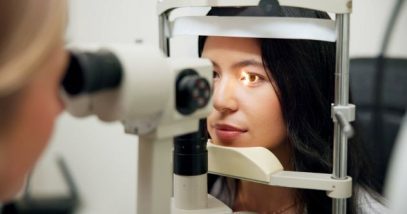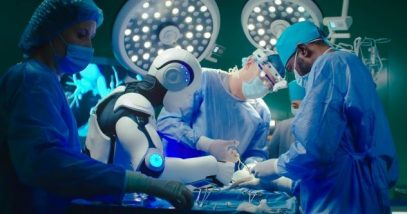 Movies and TV
Movies and TV  Movies and TV
Movies and TV  Health
Health 10 Horrifying Things That Can Happen to Your Eyeballs
 Weird Stuff
Weird Stuff 10 Hilarious-Sounding Recent News Stories
 Movies and TV
Movies and TV 10 Unsettling Real-Life Events That Inspired Iconic Horror Films
 Travel
Travel 10 Nightmare Plane Rides That Will Make Your Last Flight Seem Like Paradise
 Movies and TV
Movies and TV 10 Bizarre Events That Happened on the Set of Poltergeist
 Music
Music 10 Times Musicians Made Headlines for the Wrong Reasons
 Movies and TV
Movies and TV 10 TV Episodes That Almost Never Made It To Your Screen
 Politics
Politics 10 Times Dictators Tried to Rewrite Their Own Childhoods
 Movies and TV
Movies and TV 10 Spanish-Language Horror Films That Will Haunt Your Dreams
 Movies and TV
Movies and TV 10 Eerie Tales From Behind The Scenes Of Rosemary’s Baby
 Health
Health 10 Horrifying Things That Can Happen to Your Eyeballs
 Weird Stuff
Weird Stuff 10 Hilarious-Sounding Recent News Stories
Who's Behind Listverse?

Jamie Frater
Head Editor
Jamie founded Listverse due to an insatiable desire to share fascinating, obscure, and bizarre facts. He has been a guest speaker on numerous national radio and television stations and is a five time published author.
More About Us Movies and TV
Movies and TV 10 Unsettling Real-Life Events That Inspired Iconic Horror Films
 Travel
Travel 10 Nightmare Plane Rides That Will Make Your Last Flight Seem Like Paradise
 Movies and TV
Movies and TV 10 Bizarre Events That Happened on the Set of Poltergeist
 Music
Music 10 Times Musicians Made Headlines for the Wrong Reasons
 Movies and TV
Movies and TV 10 TV Episodes That Almost Never Made It To Your Screen
 Politics
Politics 10 Times Dictators Tried to Rewrite Their Own Childhoods
 Movies and TV
Movies and TV 10 Spanish-Language Horror Films That Will Haunt Your Dreams
Technology
Random List
 Technology
Technology 10 Worrying Cases of Artificial Intelligence Gone Rogue
 Technology
Technology 10 Awesome Upgrades to Common Household Items
 Technology
Technology 10 New Jobs Emerging from Real-World Trends
 Technology
Technology 10 Surprising Truths About the Power Grid You Were Never Told
 Technology
Technology 10 Ancient “Smart” Materials Scientists Still Can’t Reproduce
 Technology
Technology 10 Most Devastating Computer Viruses
 Technology
Technology 10 Human Inventions That Are Rewriting the Future
 Technology
Technology 10 Cutting-Edge Government Programs’ Strange Projects
 Technology
Technology 10 Disasters Caused by a Single Point of Failure
 Technology
Technology 10 Amazing New Uses for AI
 Technology
Technology 10 Low-Tech Solutions Beating High-Tech in Developing Regions
Editor’s Picks
 Movies and TV
Movies and TV 10 Psychiatric Diagnoses Of Horror Villains And Their Victims
 Movies and TV
Movies and TV 10 Greatest Movie MacGuffins Of All Time
 Movies and TV
Movies and TV 10 Iconic Movie And TV Restaurants That Are Actually Real
 Movies and TV
Movies and TV